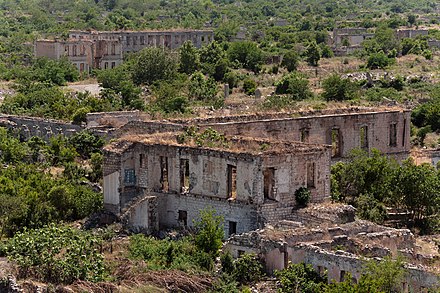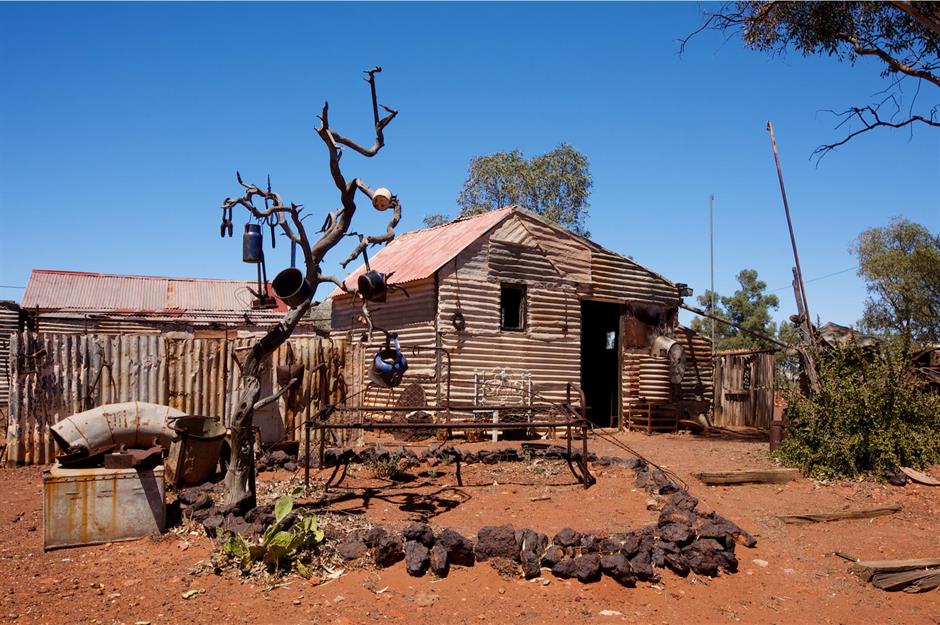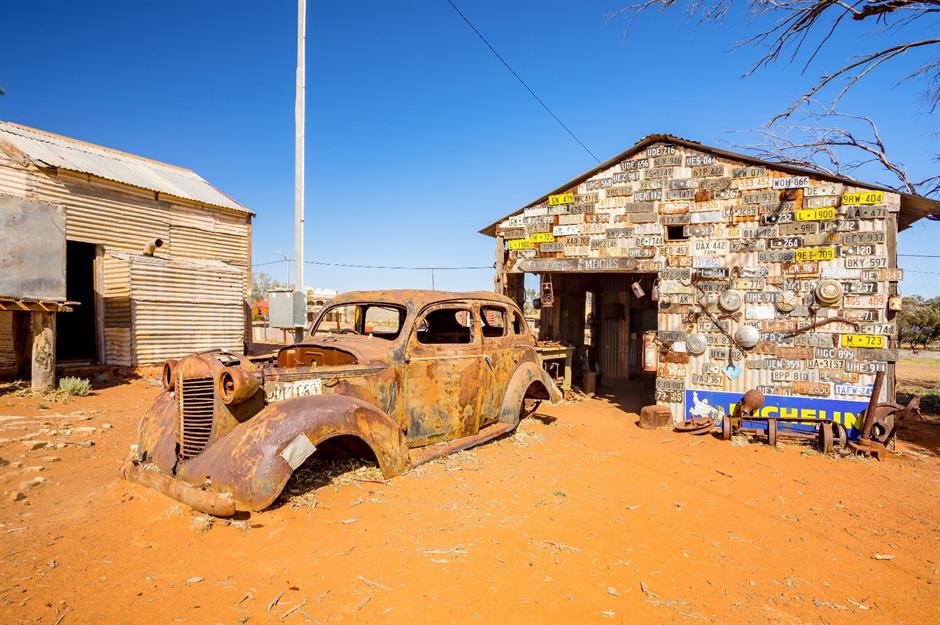
SMITHFIELD – While the words “ghost town” may conjure images of an old-time Wild West, eerily swinging saloon doors, or apparitions of cowboys passing by, Merriam-Webster defines the term as “a once-flourishing town wholly or nearly deserted usually as a result of the exhaustion of some natural resource.”
Tucked within the woods of Smithfield (far from anything remotely Wild Western) lies a place that fits the ghost town description quite nicely. Known mainly as Hanton City, as well as Haunted City, Island Woods, Rumbly, Ghost City and a few other monikers, the area holds the remains of a colonial-era village, long abandoned and somewhat reclaimed by nature over the years.

Hanton City is seeing some renewed interest lately, with Sara Corben of the “Weird Island” podcast devoting an episode to venturing out to find the area; and Jason Allard, of the web series “Abandoned from Above,” set to release a piece on his YouTube channel documenting his findings from a recent visit.
Conflicting information about the location has been put out over the years. Legends and folklore have intermixed with the pieces of history that have been gathered. And for good measure, a bit of the supernatural has been sprinkled in as well.
The area is located near the Fidelity Investments property, and off of Hanton City Trail, though those familiar with the remains of the settlement can attest to it being pretty far from the beaten path. The Smithfield town planner’s office confirms that there is a public road and trails, with the Land Trust owning some of the land, but some of the land is also privately owned by Fidelity and others.
The lack of early documentation has led to much speculation on who lived in Hanton City, including: a group of Native Americans and ex-slaves living in exile, British soldiers who deserted the American Revolutionary War, residents of a “poor farm,” and more. There are even some rhyming verses about a possible amorous relationship that took place “up in Hanton City.” The theories on what happened to the population or why they “disappeared” are just as numerous.
A few reporters and local historians have set out over the years to investigate records, locate the remains of the village, and do their best to set the record straight on the ghost town, with varying degrees of results.
A Providence Journal article from as far back as 1889 quotes a Tom Hanton, who still lived on the edge of Hanton City with his sister at the time, as being “the last of the Hantons.” He was about 80 years old at the time of the article. Hanton is quoted as saying the area “was a lively and enterprising place when he was young.” When asked about where all of the Hanton City residents had gone, Hanton is quoted as saying, “They had all got poor, and sold out to anybody, and died off,” possibly hinting that the Industrial Revolution played a part in the demise of the settlement.

A reporter by the name of M. O. Tanner wrote two articles on Hanton City in The Observer in 1972. In “Exploring ‘The Rumbly’ – Threshing Rock is part of Hanton City mystery,” from May 25, 1972, the reporter sets out in a group on rough dirt roads in an old Dodge Dart, eventually wading through swamp and woods on a search to find Threshing Rock. The landmark is a large granite rock formed by glaciers thousands of years ago, described as having a natural hollow for threshing grain. It is believed that both Native Americans and the English settlers of Hanton City used the rock for this purpose.
Tanner’s article said of Hanton City: “Some say it was a real village that sank in the middle of Cedar Swamp, like the lost city of Atlantis,” likely due to its rocky hills cropping up in the middle of the swampy area. The article also tells of “old timers” who recollect the “‘ride through the rumbly,’ that eerie, ghost-ridden place called the Hanton City Road.”
“They speak of a stone house by the roadside, where refreshments were left for weary travelers who could pay or not, as they were able. This food, a jug of rum and some ginger-bread, was supposedly set out by the mysterious Hantons.”
In Tanner’s Aug. 10, 1972, article, “Hanton City Revisited,” more light is shed on the possible inhabitants of the settlement. Various people contacted the newspaper with information on the subject after the first piece was published.
One account mentions a woman named Lydia Ann or Hittie Ann: “She was at the time when memory first met her a lady of uncertain years (not young, to be sure) who kept her hair dyed with stove blacking and played the melodeon. The young people would gather at her house … surreptitiously, we suspect … for dancing and good times.”

Through research and records, the article indicates that Hanton City seems to have been settled by three related families, dating to around the late 1600s.
“It was a place rugged beyond endurance, settled by three related families, with the surnames Pain, (now, Paine), Henenden (now Harrington) and Shepey, (now Shippee).” Hanton seems to have been one of the many variations on Harrington. Research showed that the settlers may have been granted the land as payment for serving in King Philip’s War. The residents are believed to have been farmers, tanners, boot makers, and quarry workers.
Tanner’s article tells of how Joe St. Pierre, then-Scituate resident and history buff with an interest in Hanton City, through his own research found evidence that some of the residents of the settlement may have left the area for St. Johnsbury, Vermont, after being offered land there for $1 per acre, after the Revolution.
Local historian and author Jim Ignasher has also researched and written a great deal on Hanton City, including a chapter in his 2009 book, “Remembering Smithfield: Sketches of Apple Valley.” His writings work toward separating fact from folklore, echoing many of the findings in the Observer articles.
When asked why he chose to spend time focusing on Hanton City, Ignasher said he started looking into the area back in 2002, when he noticed a lot of building happening in the surrounding area. He said he wanted to research and document what was out there “before it was lost to development.”
Hanton City today

As for what is left behind of Hanton City and still visible today, scattered throughout the area woods are cellar holes, wells, evidence of a quarry, stone walls, a cemetery, and more.
Woonsocket native and filmmaker Jason Allard, currently based in Providence, recently visited Hanton City. The latest in Allard’s web series, “Abandoned from Above,” scheduled for release on YouTube.com/jasonallard on Sept. 25, focuses on Hanton City.
Allard began documenting abandoned places in 2013, starting with “My Old School,” a documentary about the former Woonsocket Middle School. Rhode Island PBS picked up the piece at the time, and he’s continued documenting ever since. Allard said it, “ignited my passion for abandoned places and lost or forgotten history.”
Allard said he’s been getting requests to document Hanton City for the past year, receiving about three to five messages asking about it each time he releases a video. Without revealing too much about the film, Allard said of Hanton City, “The age of the structures took me by surprise,” saying the area was “virtually untouched,” and pretty rare. He said some areas were very difficult to find, with structures being around a quarter-mile to a half-mile away from each other in places. “I found at least five main areas, probably more,” Allard said, indicating that some are lesser known than the spots many have visited.
He said he was walking the woods for about five or six hours and these were the “trickiest ruins to find, and I’ve been to some pretty off the beaten path places.”
Haunted City or simply Hanton City?
Local paranormal researcher and investigator Tom D’Agostino says he has been out to the area 100 times, beginning when he was around age 15. He said his wife, Arlene, previously lived right at the edge of the area, with Hanton City Trail going by her kitchen window.
D’Agostino says he and others have taken EVP (electronic voice phenomena) recordings several times at Hanton City. He said that in one recording they heard a voice saying “help,” and in another a voice saying, “go to the barn.”
D’Agostino said there have been people who claim to hear babies crying (though he mentioned a fisher cat could also be responsible for such a sound), and he said he’s also heard a claim of a hunter reporting feeling a gun slapped out of their hands.
In his assessment, D’Agostino said being out there he could feel, “someone with us, around us … There’s a lot of history out there, a lot of land.”
(Writer’s note: On my own trip out there, strictly for article research – as I’m not usually one to speculate on the supernatural – I will say I saw one odd thing. As we headed back out on the main trail, I saw a small shadow cross the path on the ground in front of me and looked up expecting to see a butterfly or something that had cast the shadow. I didn’t see anything and then heard a small noise in the brush on the side of the path that the shadow went toward. My hiking companion saw the same, but then pointed out that maybe there was a passing leaf above that we didn’t notice … but was there?)
Preserving the past
Possible hauntings, legends and folklore aside, one thing remains: the settlement was a real village that did exist, with real people and real stories to tell. The people who have worked to uncover the truth about Hanton City, and to document and keep the history alive, understand the importance of getting it right. Thanks to them, a ghost town in the middle of the woods, in the middle of a small town, in the middle of a small state, just might remain on the map.
source:valleybreeze








